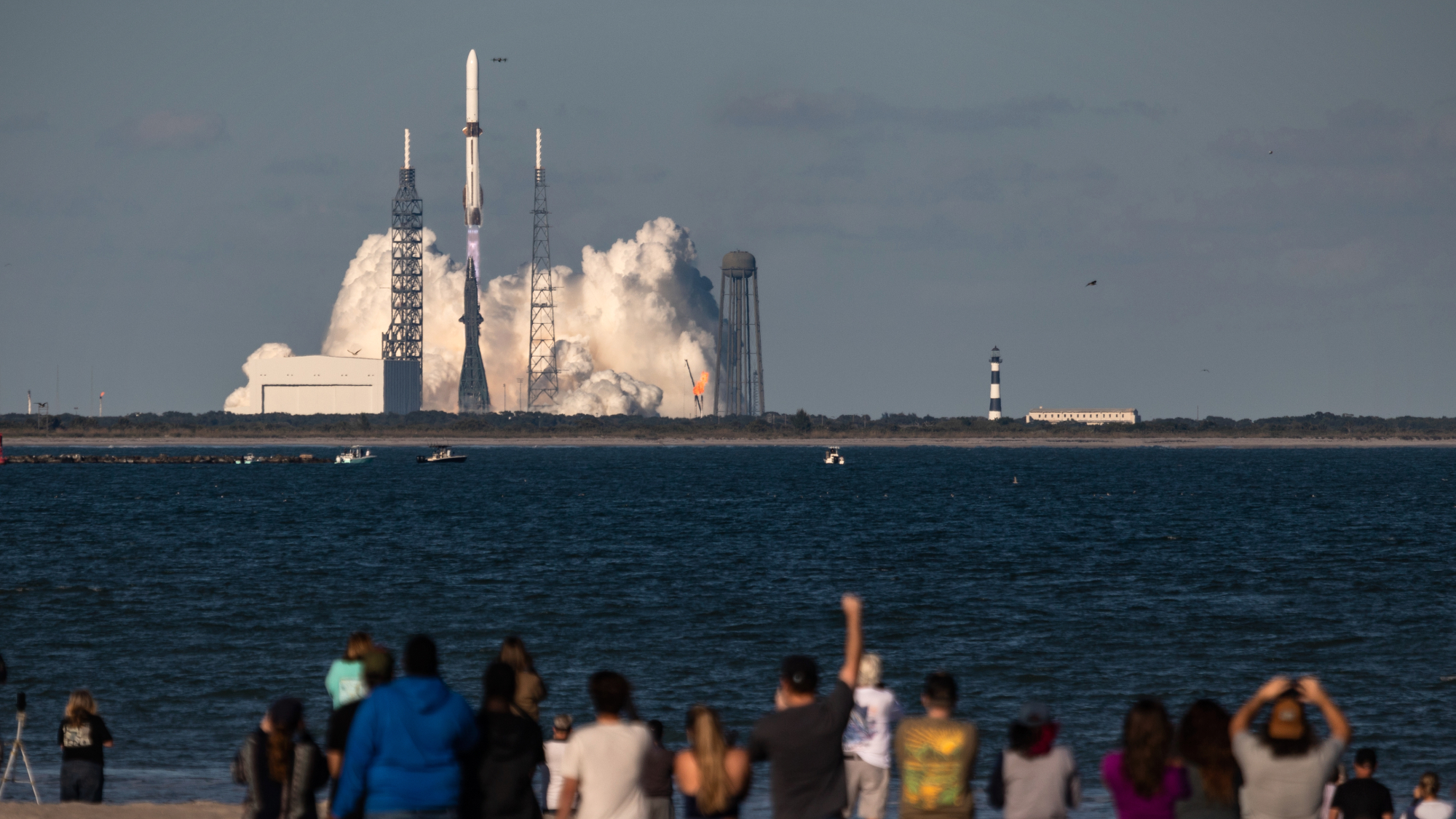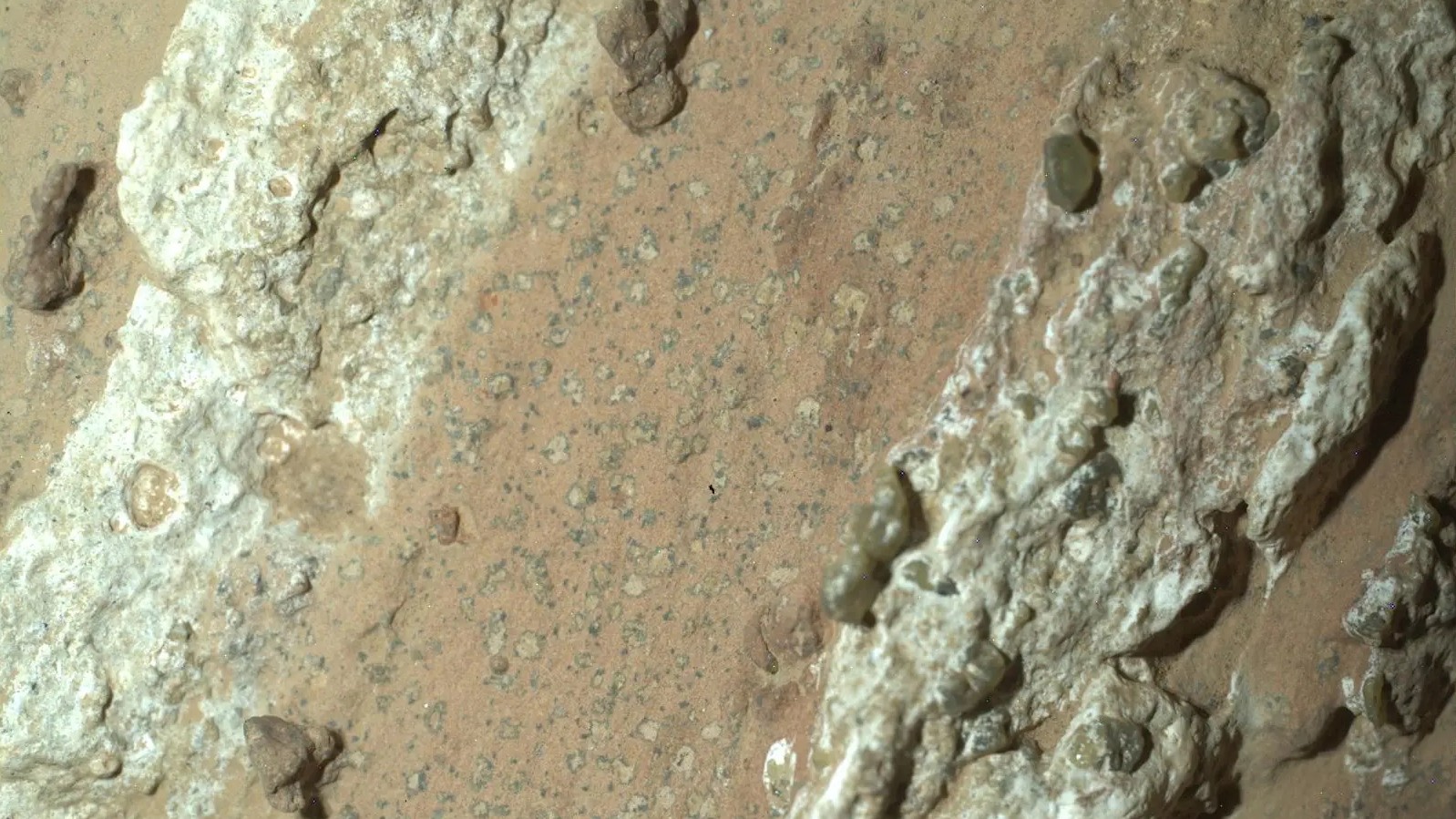Blue Origin launches Mars probes in NASA debut
The New Glenn rocket is carrying small twin spacecraft toward Mars as part of NASA’s Escapade mission


What happened
Blue Origin Thursday launched its massive New Glenn rocket from Florida’s Cape Canaveral, carrying small twin spacecraft toward Mars as part of NASA’s Escapade mission. It was Blue Origin’s first NASA mission and only the second launch of the 321-foot New Glenn. Unlike the orbital rocket’s inaugural launch in January, its booster successfully touched down on Blue Origin’s landing barge, a feat previously accomplished only by Elon Musk’s rival aerospace company SpaceX.
Who said what
New Glenn’s flight “was a complete success,” The Associated Press said, and Blue Origin owner Jeff Bezos appeared “ecstatic” as the booster landed upright. That was a “major step forward” in the company’s “bid to rival SpaceX as a reliable provider of reusable rockets,” said Scientific American. Reusing boosters cuts costs and allows for more frequent launches.
Blue Origin, founded in 2000, “has long been seen as sluggish and disappointing when compared with SpaceX,” The New York Times said. But with a few more successes, that perception “could totally flip pretty quickly,” University of Central Florida space commercialization expert Greg Autry told the newspaper. SpaceX has never sent anything to Mars, and if Blue Origin can “land something on the moon successfully in the first half of next year, then they can even claim to be ahead of SpaceX in some ways.”
What next?
The Escapade mission’s satellites, named Blue and Gold, are scheduled to start orbiting Mars in 2027 to “study the Martian atmosphere and magnetic fields and take other readings” that “could help researchers understand why the planet lost its atmosphere and inform future crewed missions,” The Wall Street Journal said. Blue Origin’s ambitious launch schedule for next year includes sending a prototype lunar lander to the moon.
The Week
Escape your echo chamber. Get the facts behind the news, plus analysis from multiple perspectives.

Sign up for The Week's Free Newsletters
From our morning news briefing to a weekly Good News Newsletter, get the best of The Week delivered directly to your inbox.
From our morning news briefing to a weekly Good News Newsletter, get the best of The Week delivered directly to your inbox.
A free daily email with the biggest news stories of the day – and the best features from TheWeek.com
Peter has worked as a news and culture writer and editor at The Week since the site's launch in 2008. He covers politics, world affairs, religion and cultural currents. His journalism career began as a copy editor at a financial newswire and has included editorial positions at The New York Times Magazine, Facts on File, and Oregon State University.
-
 Ashes to ashes, ducks to ducks: the end of Bazball?
Ashes to ashes, ducks to ducks: the end of Bazball?Talking Point Swashbuckling philosophy of England men’s cricket team ‘that once carried all along with it has become divisive and polarising’
-
 The strangely resilient phenomenon of stowaways on planes
The strangely resilient phenomenon of stowaways on planesIn The Spotlight Lapses in security are still allowing passengers to board flights without tickets or passports
-
 Four Seasons Seoul: a fascinating blend of old and new in South Korea
Four Seasons Seoul: a fascinating blend of old and new in South KoreaThe Week Recommends Located right in the heart of the action, this classy hotel is the perfect base to explore the capital
-
 ‘The Big Crunch’: why science is divided over the future of the universe
‘The Big Crunch’: why science is divided over the future of the universeThe Explainer New study upends the prevailing theory about dark matter and says it is weakening
-
 Dinosaurs were thriving before asteroid, study finds
Dinosaurs were thriving before asteroid, study findsSpeed Read The dinosaurs would not have gone extinct if not for the asteroid
-
 The moon is rusting
The moon is rustingUnder the radar The Earth is likely to blame
-
 Panspermia: the theory that life was sent to Earth by aliens
Panspermia: the theory that life was sent to Earth by aliensUnder The Radar New findings have resurfaced an old, controversial idea
-
 Africa could become the next frontier for space programs
Africa could become the next frontier for space programsThe Explainer China and the US are both working on space applications for Africa
-
 NASA reveals ‘clearest sign of life’ on Mars yet
NASA reveals ‘clearest sign of life’ on Mars yetSpeed Read The evidence came in the form of a rock sample collected on the planet
-
 SpaceX breaks Starship losing streak in 10th test
SpaceX breaks Starship losing streak in 10th testspeed read The Starship rocket's test flight was largely successful, deploying eight dummy satellites during its hour in space
-
 NASA is moving away from tracking climate change
NASA is moving away from tracking climate changeThe Explainer Climate missions could be going dark
